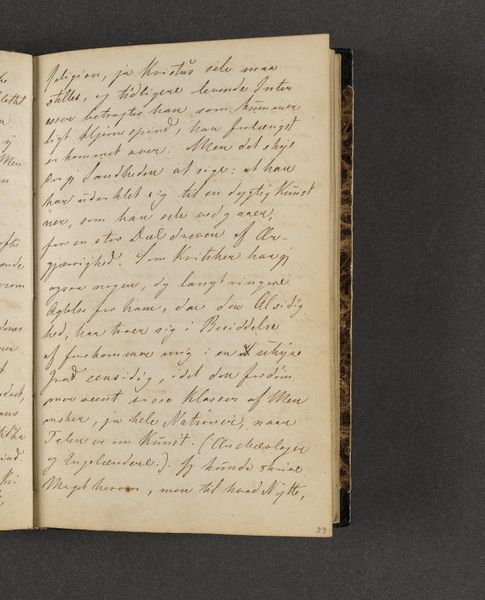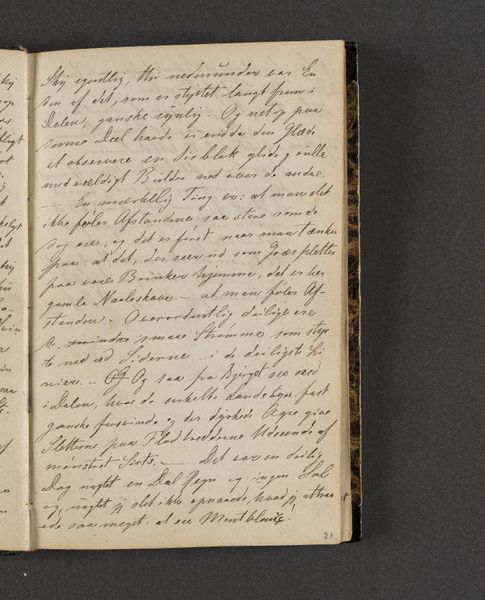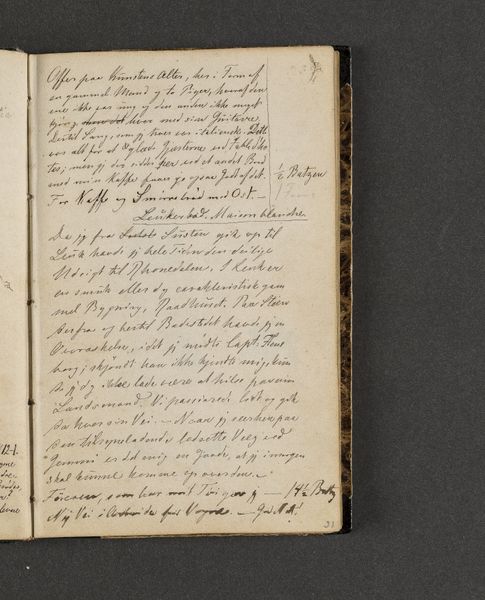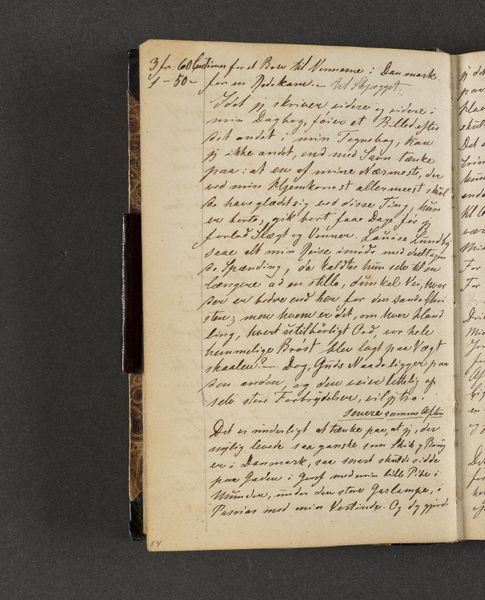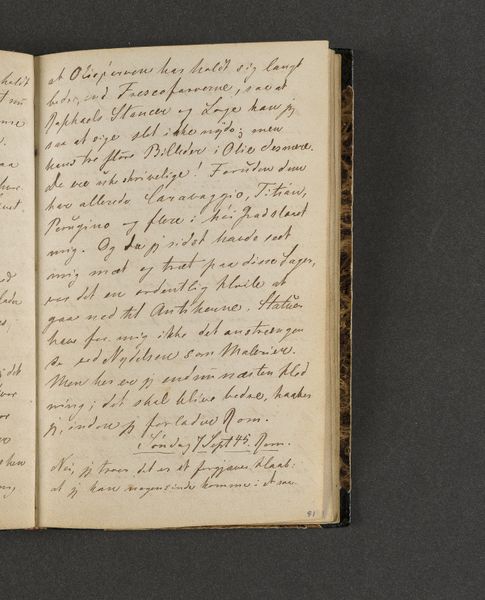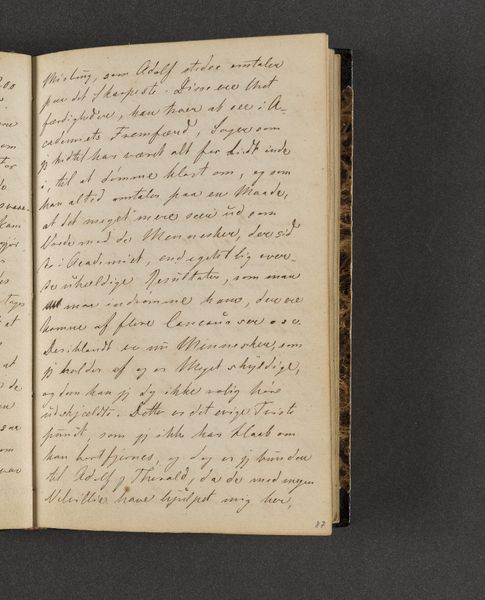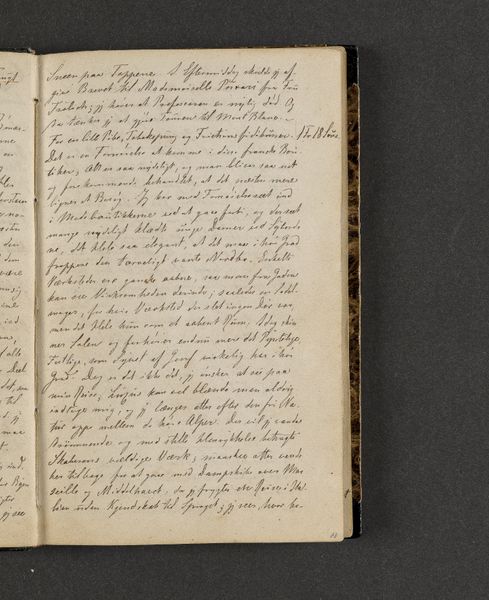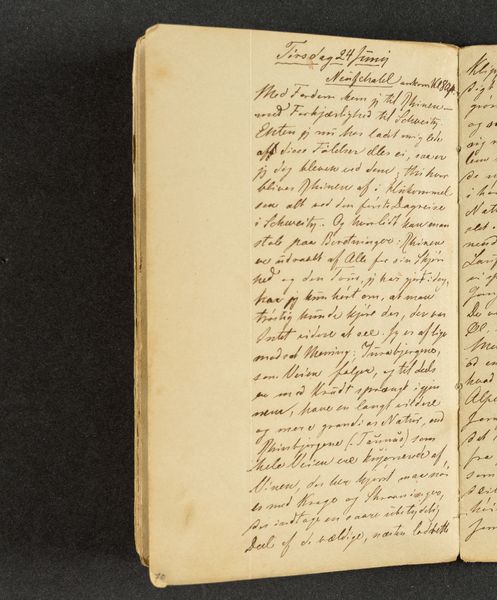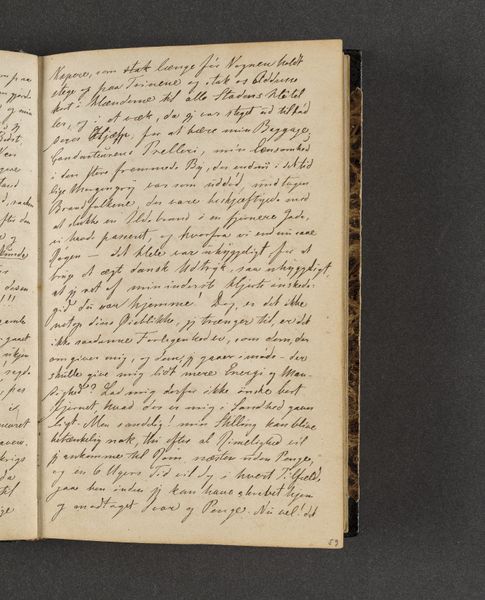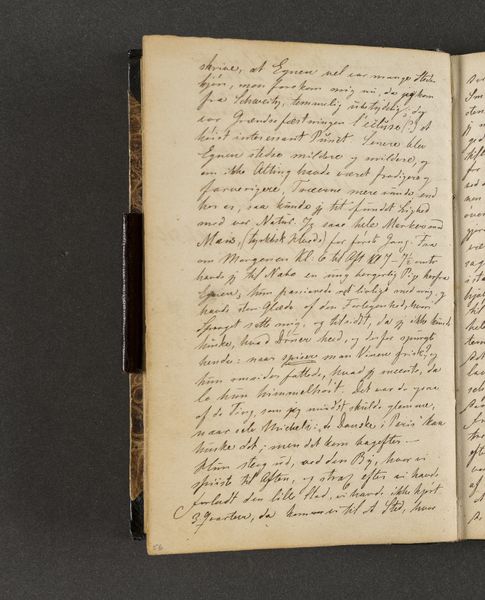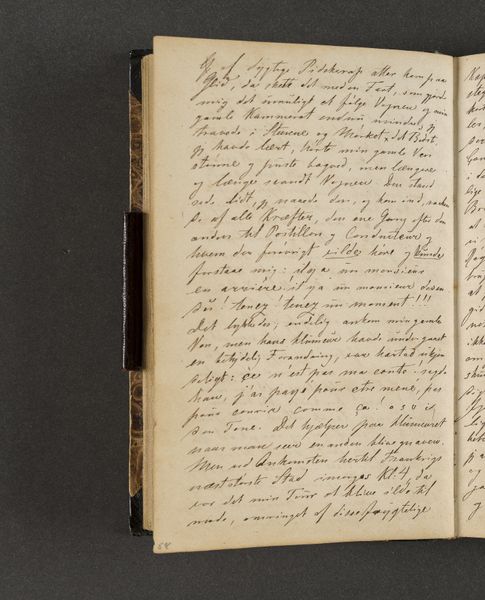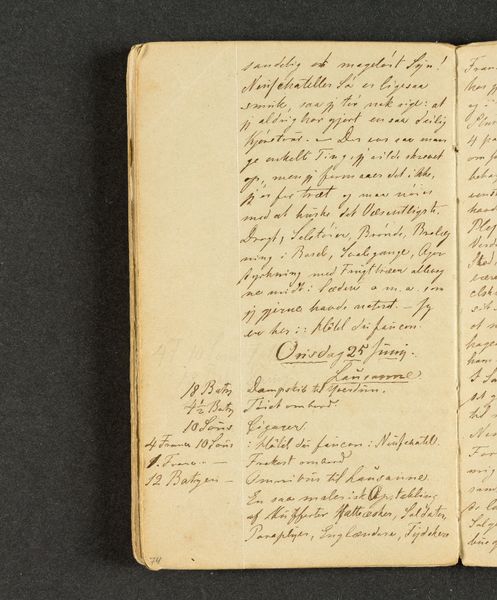
drawing
drawing
landscape
romanticism
history-painting
Dimensions: 161 mm (height) x 103 mm (width) x 11 mm (depth) (monteringsmaal)
Curator: So, let's look at Johan Thomas Lundbye's "Rejsedagbog" from 1845, a drawing held at the SMK. What are your initial thoughts? Editor: It's just a page of handwritten script, almost like an open book or a journal. It feels quite personal and gives you an interesting peek into the past. I’m intrigued by the material presence of the page itself and the labor of the handwritten word. What do you see in this piece? Curator: I see a material record of travel and thought, embedded in the social fabric of 19th-century Europe. It's not just what's written, but the means by which it’s recorded: the paper itself, the ink, the very act of writing as a practice tied to class and education. Lundbye's journey, rendered through his own hand, represents both personal experience and broader cultural mobility. Does that perspective resonate with you? Editor: Definitely. Thinking about the material production – the harvesting of materials to make the paper, the production of ink, and then Lundbye's education in penmanship. It all contributes to my understanding. Does viewing this piece change if we consider that the page could be part of a larger sketchbook? Curator: Precisely! We start thinking about production beyond a singular “artwork” towards series, reproducibility, accessibility. Furthermore, it provokes considerations of art not only as a rarefied object but also a tangible element of historical daily experience, wouldn’t you say? Editor: Absolutely. I initially thought of the artwork being more of a glimpse into his thoughts, but it actually goes further, into the modes of production of artistic value during the Romantic era. Thank you. Curator: And thank you! Analyzing its materiality allows us to recognize the tangible relationships and social context in its creation.
Comments
No comments
Be the first to comment and join the conversation on the ultimate creative platform.
